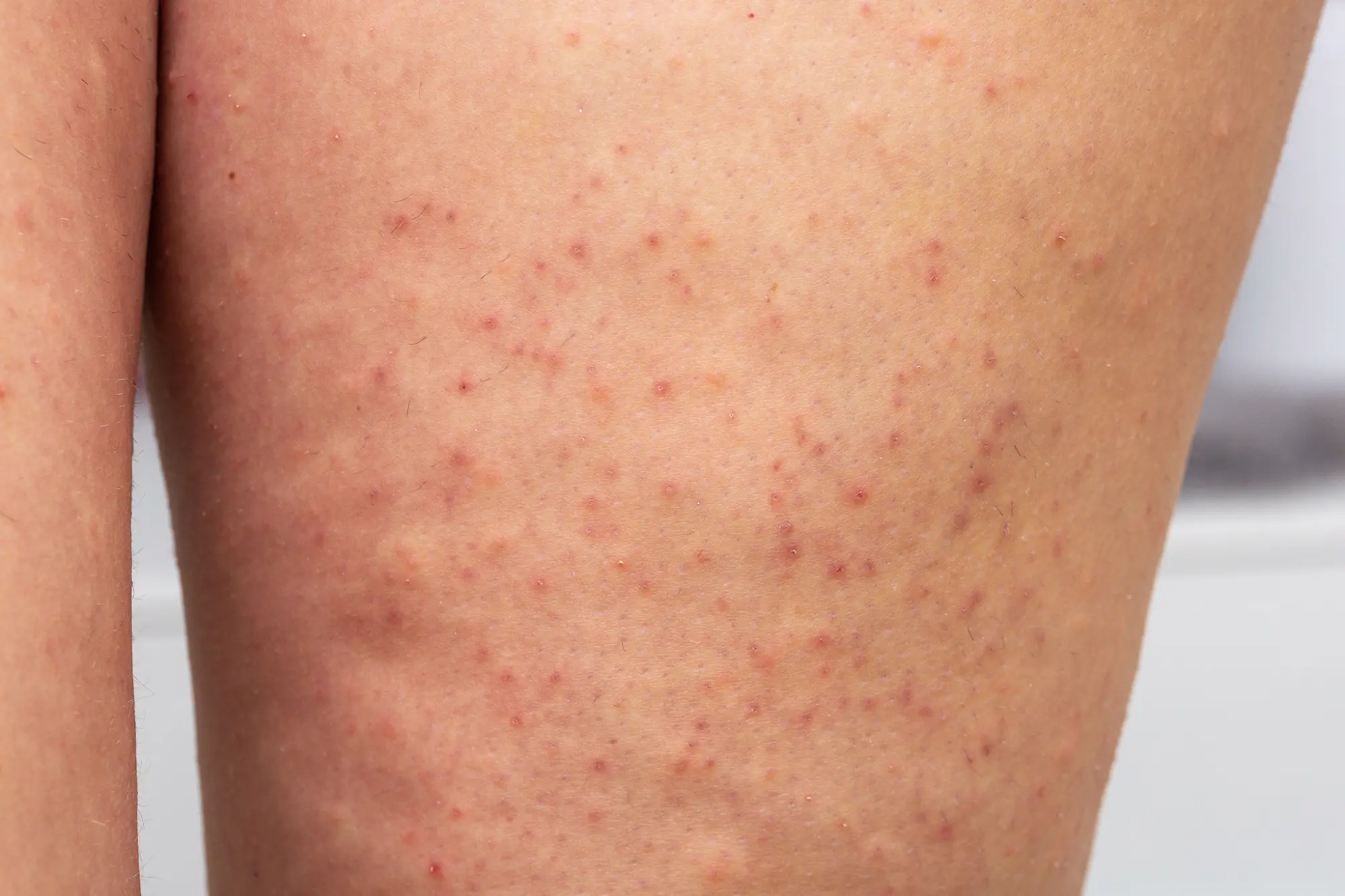
Keratosis Pilaris
- Home
- Keratosis Pilaris
Keratosis Pilaris Treatment in Terre Haute & Vincennes
Small bumps on your arms or legs? You're not alone — and you're not imagining it. Keratosis pilaris (KP) is a common skin condition that causes tiny, rough bumps that often feel like sandpaper. While it's harmless, it can be stubborn, frustrating, and sometimes embarrassing — especially when it's dismissed as "just cosmetic."
At Biltmore Dermatology, we take KP seriously because how your skin feels matters — and how you feel in it matters even more.
What Is Keratosis Pilaris?
Keratosis pilaris is caused by a buildup of keratin, the protein that helps protect your skin. Instead of shedding normally, keratin blocks hair follicles, creating tiny, hard bumps that may be skin-colored, red, or inflamed.
It most commonly appears on:
- Upper arms
- Thighs
- Buttocks
- Cheeks (especially in children)
It's often worse in dry weather, during puberty, or for those with a history of eczema or dry skin.
Symptoms of Keratosis Pilaris
- Small, rough bumps (like goosebumps that don't go away)
- Patches of dry, sandpaper-like skin
- Pinkness or redness around the bumps
- Sometimes mild itching or inflammation
- May worsen with shaving or friction
Many patients say, "I thought it was just my skin," — until they're properly diagnosed and treated.
Is Keratosis Pilaris Dangerous?
No — keratosis pilaris is not harmful or contagious. But that doesn't mean it doesn't matter.
It can cause:
- Embarrassment (especially when visible)
- Skin sensitivity or irritation
- Emotional frustration from lack of improvement
- Self-consciousness in social or professional settings
At Biltmore Dermatology, we don't brush it off — we treat it with care.
How We Treat Keratosis Pilaris
There is no one-time cure for Keratosis Pilaris but with the right care, the bumps can be softened, calmed, and managed long-term.
Keratosis Pilaris treatment options include:
- Prescription-strength exfoliating creams (with urea, lactic acid, or salicylic acid)
- Topical retinoids to encourage cell turnover
- Gentle cleansers to reduce irritation and inflammation
- Laser therapy (for persistent redness or visible blood vessels)
- Daily skincare routines to prevent buildup and dryness
- Lifestyle tips (avoid harsh scrubs, hot showers, and irritating fabrics)
We'll create a personalized care plan based on your skin type, severity, and goals.
Home Remedies vs. Professional Treatment
Some mild cases of Keratosis Pilaris respond to over-the-counter lotions or exfoliants. But if you've already tried those with little success — or if your skin is red, inflamed, or itchy — it's time to see a dermatology provider.
We help you skip the guesswork and get results faster.
Why Choose Biltmore Dermatology?
- 24+ years of dermatology experience
- Board-certified dermatology provider Ryan T. Patterson, NP-C, DCNP
- Clear diagnosis and honest treatment plans
- Compassionate care that never downplays your concerns
- Trusted by patients across Terre Haute, Vincennes, and surrounding Indiana communities
If you're tired of covering it, explaining it, or trying to fix it on your own — we're here. You deserve better than "nothing works."
No referral is needed. Walk in today. Stay for the care and expertise.
Come for answers. Come for relief. Come for the care.